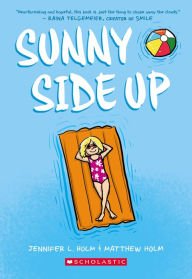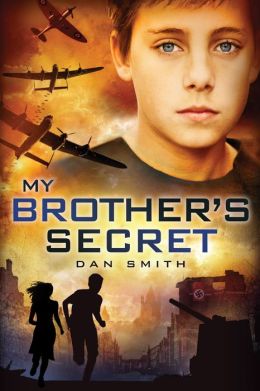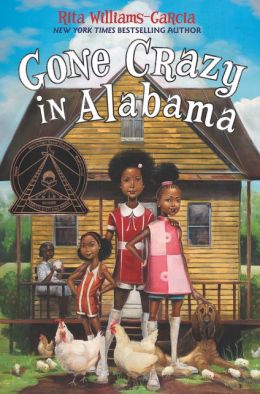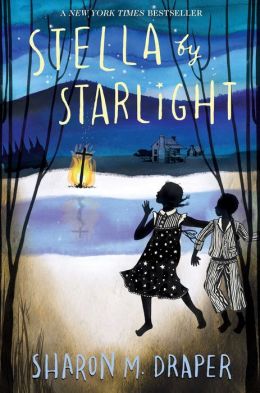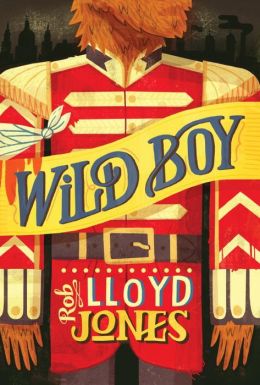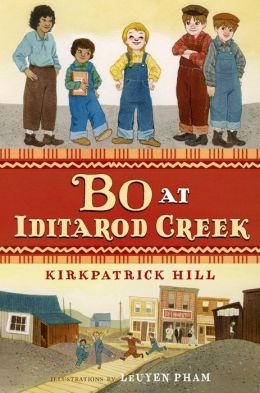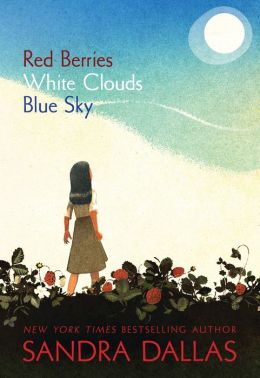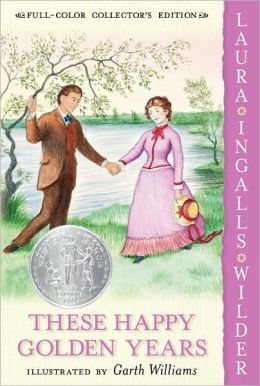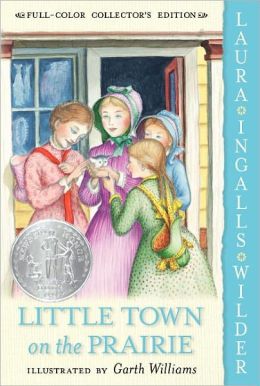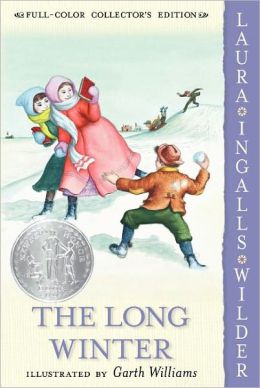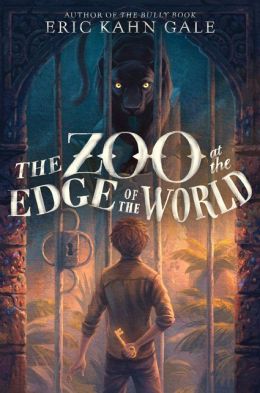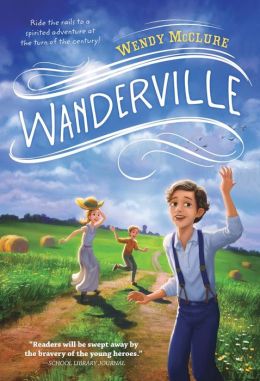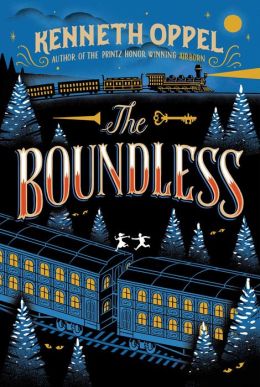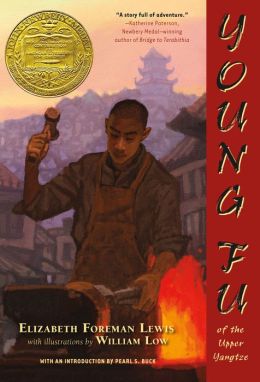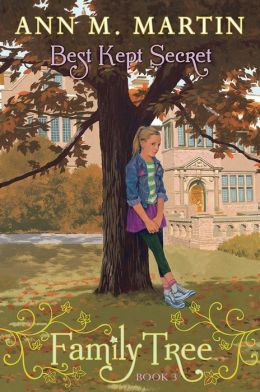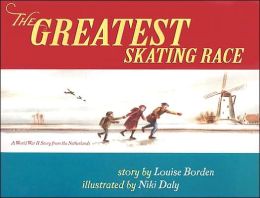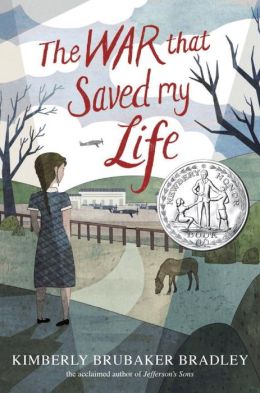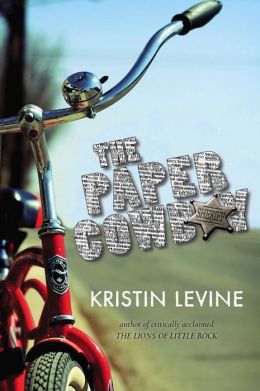new posts in all blogs
Viewing: Blog Posts Tagged with: MG historical, Most Recent at Top [Help]
Results 26 - 50 of 71
How to use this Page
You are viewing the most recent posts tagged with the words: MG historical in the JacketFlap blog reader. What is a tag? Think of a tag as a keyword or category label. Tags can both help you find posts on JacketFlap.com as well as provide an easy way for you to "remember" and classify posts for later recall. Try adding a tag yourself by clicking "Add a tag" below a post's header. Scroll down through the list of Recent Posts in the left column and click on a post title that sounds interesting. You can view all posts from a specific blog by clicking the Blog name in the right column, or you can click a 'More Posts from this Blog' link in any individual post.

By:
Becky Laney,
on 9/15/2015
Blog:
Becky's Book Reviews
(
Login to Add to MyJacketFlap)
JacketFlap tags:
YA Fiction,
YA Fantasy,
Scholastic,
MG Fiction,
review copy,
MG Fantasy,
YA Historical,
mg historical,
2015,
books reviewed in 2015,
Add a tag
Mark of The Thief. Jennifer A. Nielsen. 2015. Scholastic. 352 pages. [Source: Review copy]
Did I enjoy Jennifer A. Nielsen's Mark of the Thief? Yes!!! Very much. What should YOU know before picking it up? Well, it's a FANTASY novel set in Ancient Rome. Sound appealing? I think so! Here's how it starts:
In Rome, nothing mattered more than the gods, and nothing mattered less than its slaves. Only a fool of a slave would ever challenge the gods' power. I was beginning to look like that fool.
Mark of the Thief is narrated by a slave, Nic, who through a series of events find himself in ever-increasing danger. It starts with him refusing to obey Sal's orders to go into a newly discovered tunnel/cave within the mine. He's not the first slave Sal's ordered there. The first died. The second, well, he came back clearly insane. Nic's escape attempt doesn't quite go as planned, it's best not to overhear EVIL, SECRET plans and be seen...But Nic is lucky in many ways when he does finally venture into the depths of the earth....
I would definitely recommend this one. Nic's character was great. And Nic meets a lot of interesting characters, including one he's not quite sure about at any given time: a young woman named Aurelia.
Betrayal, Secrets, Mystery and Suspense. Magic. ACTION. Just a few reasons why you might find this one difficult to put down!
© 2015 Becky Laney of
Becky's Book Reviews
A Night Divided. Jennifer A. Nielsen. 2015. Scholastic. 384 pages. [Source: Review copy]
Did I enjoy A Night Divided by Jennifer A. Nielsen? Yes and no. The better question may be, did I find it compelling and well-written? The answer to that question is YES. You see, A Night Divided isn't exactly a book that you can feel comfortable ENJOYING. The heroine, Gerta, wakes up one morning to find a wall outside her window. THE BERLIN WALL. This would be disturbing or troubling no matter the situation, but, the fact that her father and brother are now outside the wall, on the other side of Berlin, that is VERY TROUBLING to Gerta, Fritz (her other brother), and her mother.
Gerta knows that what she is feeling, that what she is thinking--whether acted on or not--could lead to nothing but trouble with the government if she's found out or informed against. For she longs with all her being to be FREE. Her brother does as well. The two of them are at risk throughout the novel...even before Gerta interprets a "secret" message from her Father.
I would definitely recommend this one to readers who enjoy historical fiction. The writing was great. The characterization was done quite well. And though I know it's subjective, I feel it was a compelling, captivating read. © 2015 Becky Laney of
Becky's Book Reviews
Sunny Side Up. Jennifer L. Holm and Matthew Holm. 2015. Scholastic. 224 pages. [Source: Review copy]
Sunny Side Up is a graphic novel, a coming-of-age story starring Sunny Lewin. It is set in August 1976. It wasn't Sunny's first vacation choice to go visit her grandfather in Florida. The family had planned on a beach vacation, a vacation where Sunny's best friend could come too. But family troubles--troubles concerning Sunny's older brother--changed everything. Now Sunny is on her own for this trip and visiting her grandfather in his retirement community. Flashes reveal much in this one, readers learn about Sunny's life in Pennsylvania: her friends, her family, and what led to this vacation.
I liked this one. I did. I don't read many graphic novels per year--at most three or four. But I am SO GLAD I read Sunny Side Up. I loved the setting. I love stories featuring grandparents and the senior community. I love the main character, Sunny. I loved, loved, loved how by the end of vacation she had found her voice and REALLY opened up. I also loved that she made a new friend and had a few adventures with someone her own age. I loved that she discovered comic books and super heroes. Some of the pages devoted to her discovering super heroes were among my favorites. And I LOVED the ending.
Overall this one is oh-so-easy to recommend. Even to readers who don't typically read graphic novels.
© 2015 Becky Laney of
Becky's Book Reviews

By:
Becky Laney,
on 8/12/2015
Blog:
Becky's Book Reviews
(
Login to Add to MyJacketFlap)
JacketFlap tags:
YA Fiction,
Random House,
J Fiction,
World War II,
YA Sports,
J Sports,
2010,
MG Fiction,
review copy,
YA Historical,
mg historical,
j historical,
books reviewed in 2015,
Add a tag
Missing in Action. Dean Hughes. 2010/2015. Random House. 240 pages. [Source: Review copy]
I definitely enjoyed reading Dean Hughes' Missing in Action. I think anyone who enjoys stories set during World War II or anyone who enjoys baseball stories will be able to appreciate this coming-of-age story.
Jay Thacker has recently moved from Salt Lake City to Delta, Utah. Jay and his mom are staying with his grandparents--his maternal grandparents. It is a bit of an adjustment for him--not that his life was perfect before--but starting over isn't always easy no matter one's past. Jay's father--who was half-Navajo--is a soldier currently listed as "missing in action." Jay is confused by this. Is his dad alive or dead? Is he a prisoner of war? Should he feel guilty if he starts moving on in his life? of thinking of his father as dead? how long should he cling to hope that he's alive? He doesn't want his dad to be dead, but, he's been missing-in-action for two or three years--a LONG time not to have heard. Still. There's always a chance that he is still alive...and Jay isn't one to rule that out. (Is his mom?)
So. Jay is new in town, and, he starts playing baseball with the other kids--the other boys. He loves playing with the others, he does, but, he doesn't like that he's called "Chief" because he's Indian. He feels that there is some stigma attached to being Indian, and, he doesn't want to 'be' anything...other than himself. Are these friendships real?
Complicating things in a wonderful way, Jay begins working with Ken, a Japanese-American teen, one of many being held at an Internment Camp in the desert. If his Dad happens to be alive, chances are, he is in a Japanese prisoner of war camp. Wouldn't be friendly with Ken be a betrayal to his Dad? Then again, Ken isn't like Jay thought he "ought" to be. Ken is great at baseball, great at dancing, and so very American. Ken is easily one of the best characters in the novel. It's hard not to love him. Jay learns a lot about friendship from his time working side-by-side with Ken on his grandfather's farm.
Missing in Action is a great coming-of-age story focusing on identity and friendship. It's easy to recommend this one.
© 2015 Becky Laney of
Becky's Book Reviews

By:
Becky Laney,
on 7/1/2015
Blog:
Becky's Book Reviews
(
Login to Add to MyJacketFlap)
JacketFlap tags:
war,
J Fiction,
World War II,
Scholastic,
MG Fiction,
review copy,
mg historical,
j historical,
2015,
books reviewed in 2015,
Add a tag
My Brother's Secret. Dan Smith. 2015. Scholastic. 304 pages. [Source: Review copy]
Karl Friedmann loves to play war games, and can't wait to join the Hitler Youth. But after his father's death, he begins to question the rightness of the war, and the rightness of the Nazi party. This change of heart isn't immediate, it's more of a journey as he observes what the war has done to his family, to his friends, to his neighborhood. Two people definitely make an impact on him: his older brother, who does have a secret, and his new best friend, a girl around his own age.
My Brother's Secret is an intense read with plenty of action and drama.
I definitely found it a compelling read--a quick one too! It was action-packed until the very end. I was almost sure there was no way they could resolve it with so few pages left, and, in a way, it did feel rushed. But still. Quite a read.
© 2015 Becky Laney of
Becky's Book Reviews

By:
Becky Laney,
on 6/19/2015
Blog:
Becky's Book Reviews
(
Login to Add to MyJacketFlap)
JacketFlap tags:
HarperCollins,
family,
Summer,
dysfunctional families,
MG Fiction,
library book,
mg historical,
2015,
2015 Cybils-eligible,
books reviewed in 2015,
Add a tag
Gone Crazy in Alabama. Rita Williams-Garcia. 2015. HarperCollins. 304 pages. [Source: Library]
Vonetta, Fern, and I didn't sleep well last night or the night before. There's something about preparing for a trip that draws my sisters and me closer together than we already are. Maybe it's the planning and excitement of going places or seeing who we're going to see. Gone Crazy in Alabama is the third novel about the Gaither sisters. The first two are
One Crazy Summer and
P.S. Be Eleven. I really LOVED both previous books in the series, so my expectations for the third book were HIGH.
In the third book, the three sisters travel on their own to visit relatives in Alabama: they will be visiting their grandma, Big Ma; their great-grandmother, Ma Charles; and their Uncle Varnell, the one who stole from them in P.S. Be Eleven. (Also they will be spending time with Jimmy Trotter their older cousin).
I was not disappointed with Gone Crazy in Alabama. I loved it for much of the same reasons as I loved the previous novels in the series.
I loved the characterization. All three sisters--Delphine, Vonetta, Fern--and their extended family are wonderfully, believably flawed. The tension between the family members feels genuine and not forced. The family from the first book through the third book just feels oh-so-believably-right.
I loved the writing, the storytelling. I loved the dialogue too.
I loved the setting. Gone Crazy in Alabama is set in Alabama in the summer of 1969. Among other things, the book features the family gathering around the television and watching the Apollo 11 moon mission. But the book isn't just about that memorable moment, far from it. Most of the drama in Gone Crazy in Alabama is FAMILY DRAMA. Drama between the sisters' great-aunt and great-grandmother (a family feud) and drama between the three girls themselves. Relationships will be tested...
Gone Crazy in Alabama is a great coming-of-age novel.
© 2015 Becky Laney of
Becky's Book Reviews

By:
Becky Laney,
on 6/18/2015
Blog:
Becky's Book Reviews
(
Login to Add to MyJacketFlap)
JacketFlap tags:
family,
J Fiction,
Simon and Schuster,
MG Fiction,
library book,
mg historical,
j historical,
2015,
2015 Cybils-eligible,
books reviewed in 2015,
Add a tag
Stella by Starlight. Sharon M. Draper. 2015. Simon & Schuster. 336 pages. [Source: Library]
Nine robed figures dressed all in white. Heads covered with softly pointed hoods. Against the black of night, a single wooden cross blazed. Reflections of peppery-red flames shimmered across the otherwise dark surface of Kilkenny Pond. Stella by Starlight is set in Bumblebee, North Carolina, in the fall of 1932. What can I say about this one? I could say many things, but, I'll start with this: I LOVED, LOVED, LOVED IT.
I loved the narration. I loved the heroine, Stella, she makes a remarkable narrator. I loved her voice and her spirit. I loved the characterization--it was rich. I loved meeting Stella and her brother, Jojo. I loved her parents. I loved getting to know her neighbors. I loved that we get a real sense of community and place. It was the kind of novel that is completely absorbing--compelling. I loved the drama and the intensity. Stella by Starlight is what happens in one community after three African-American men decide to register to vote. The book captures why the men chose to act, what voting meant to them, what it represented. The book captures what it meant to their families and the community as well. Stella knows, for example, that it is a courageous act for her father, and, a necessary one as well. She's proud of her father for doing what he feels is right--knows is right. But Stella also knows a healthy-fear of the KKK. The book captures that uncertainty, that fear, it brings the community together as one. I also loved the religious/spiritual aspects of this one: how central the church is, how central the Christian faith is in the community. It celebrates faith, and shows it to be a powerful force. Stella by Starlight is beautifully written. I highly recommend it!
© 2015 Becky Laney of
Becky's Book Reviews
Wild Boy. Rob Lloyd-Jones. 2013. Candlewick Press. 295 pages. [Source: Review copy]
PrologueSouthwark, London, May 1838That night, the night the showman came, the moon was the color of mud.Do you love historical mysteries? compelling historical mysteries set in Victorian London?! Wild Boy is definitely one I'd recommend.
This murder-mystery stars two unlikely friends: the Wild Boy, a sideshow "freak," and Clarissa, a young acrobat and the daughter of the circus ringmaster. These two enemies--Wild Boy doesn't really have many friends--are pushed together under some strange circumstances. Wild Boy agrees, for better or worse, to help Clarissa find a rich person to pickpocket. What they pocket isn't money, but, a mysterious note warning someone--but WHO--that his (or her) life is in great danger. Wild Boy, who knows it is oh-so-risky to leave his sideshow "home," decides to brave it. He'll go in search of the would-be recipient. Surely he can figure out who the note was meant for before it's too late...
He does manage to find out WHO, and just in time to witness the crime--the murder. But the murderer was wearing a mask, and, I believe a cape as well. There are a handful of clues for him to work with, however. If he gets the chance. For Wild Boy, within minutes of the crime, becomes the prime suspect. He's an animal, after all, right?!
For Wild Boy to live long enough to solve the mystery, he'll need a little help from others...
I really LOVED Wild Boy. I loved Wild Boy himself. I loved the narrative. He had me hooked from the start. I also loved Clarissa. I thought the way these two were brought together was great. The atmosphere of this one--the setting, the description, the detail--it all worked quite well.
Have you read Wild Boy? What did you think of it?
© 2015 Becky Laney of
Becky's Book Reviews

By:
Becky Laney,
on 5/20/2015
Blog:
Becky's Book Reviews
(
Login to Add to MyJacketFlap)
JacketFlap tags:
war,
Historical Fiction,
J Fiction,
World War II,
children's classic,
MG Fiction,
book I bought,
1942,
mg historical,
j historical,
books reviewed in 2015,
Add a tag
Snow Treasure. Marie McSwigan. Illustrated by Mary Reardon. 1942. 208 pages. [Source: Bought]
Set in Norway in 1940, Snow Treasure is a true must-read for anyone who loves a good adventure story or a good war story. Snow Treasure is based on a true story too! It is about the smuggling of Norway's gold, smuggling it out of the country so that it doesn't fall into Nazi hands. How is it smuggled out? Who could hope to smuggle it out undetected without any Nazi being the wiser? Why, you let children do it, naturally.
The hero of Snow Treasure is a young boy named Peter Lundstrom. He isn't the only child from his Norwegian village involved. He has a lot of help from other boys and girls. The older and stronger can carry more gold on their sled. The younger take less. But all work together to help their country in need. They are one part of the process, adults also play a big role, of course. For it will be Peter's uncle who will smuggle the gold out of the country on his ship.
I loved everything about this one. I loved the characters. I loved Peter and his family. I loved the adventure aspect of it. It's a thrilling read. It isn't a simple, easy process. It's hard work. And each trip is a risk, of course. For they do see and hear a lot of Nazis as they are carrying on their most secret work.
Snow Treasure is a compelling read for children and adults.
© 2015 Becky Laney of
Becky's Book Reviews

By:
Becky Laney,
on 5/14/2015
Blog:
Becky's Book Reviews
(
Login to Add to MyJacketFlap)
JacketFlap tags:
mg historical,
j historical,
books reviewed in 2015,
J Fiction,
Newbery Honor,
children's classic,
MG Fiction,
1964,
book I bought,
Add a tag
Across Five Aprils. Irene Hunt. 1964. 224 pages. [Source: Bought]
Did I love, love, love Irene Hunt's Across Five Aprils? Probably not. Did I love it a lot more than I thought I would? Yes, definitely. Across Five Aprils is a Newbery Honor Book. This May I'll be focusing on Newbery honor books and winners published in the 1960s. I probably wouldn't have picked this one up if I hadn't been doing a Newbery challenge or two this year. I'm very glad I read this one.
Across Five Aprils is historical fiction. Jethro Creighton is the hero of the novel. It opens in April 1861 and concludes in April 1865, I believe. Readers see the Civil War through his eyes. He is not a soldier, he's just a boy. His older brothers, however, do go to war. (This one is set in Illinois). Most of his brothers fight for the Union, but, one of his brothers, his favorite brother, fights for the Confederacy. Jethro tries to keep up with the war news as well as he can, mainly through newspapers he picks up when he does manage to get into town, but also from letters home from his brothers. Jethro is busy enough on the farm. He's essentially running his family's farm.
Readers get an opportunity not only to get to know Jethro, but his family as well. I was most interested in his sister, Jenny, and his schoolteacher, Shadrach Yale.
There were many things I liked about Across Five Aprils. I thought the characterization was very well done. Some of the scenes were just wonderful.
© 2015 Becky Laney of
Becky's Book Reviews
When Hitler Stole Pink Rabbit. Judith Kerr. 1971. Random House. 191 pages. [Source: Bought]
I enjoyed reading Judith Kerr's When Hitler Stole Pink Rabbit. The book is set in Germany, Switzerland, and France in the 1930s. The book opens several weeks before Hitler comes to power. Anna's father, a famous writer, decides to flee Germany before the election, just in case. A wise decision, it turns out. His family follows a week or two later, I believe. The family may have escaped immediate danger, but life won't exactly be easy either. He has to find a way to support his family--to continue to support his family no matter the economics or politics of Europe. The family first attempt to resettle in Switzerland, but, he's unable to find a paying audience for his work. That is, no one wants to publish his work. The family then moves to France to resettle. They spend more time in France than they did in Switzerland. But it's still a rough transition. The book is told through Anna's perspective. And the challenges are real. Learning new languages, going to new schools, general anxiety, etc.
The book has an unusual title. If you've read the book, it makes sense. The family leaves on relatively short notice. They can only take a few suitcases. They cannot take everything, of course. Anything they leave behind will most likely be taken or confiscated. Anna, for better or worse, chooses a new stuffed toy--a dog--over her favorite, beloved "pink rabbit." She hates the idea of it being gone forever and being confiscated or "stolen" by the Nazis.
The book does a good job of capturing what it might have been like to be Jewish in Europe in the 1930s. Though this one is set many years before World War II.
© 2015 Becky Laney of
Becky's Book Reviews

By:
Becky Laney,
on 5/10/2015
Blog:
Becky's Book Reviews
(
Login to Add to MyJacketFlap)
JacketFlap tags:
children's classic,
1965,
MG Fiction,
Square Fish,
review copy,
mg historical,
j historical,
books reviewed in 2015,
Newbery,
J Fiction,
2008,
Add a tag
I, Juan de Pareja. Elizabeth Borton de Trevino. 1965/2008. Square Fish. 192 pages. [Source: Review copy]
I, Juan de Pareja, was born into slavery early in the seventeenth century. I am not certain of the year.I am so glad I read I, Juan de Pareja. The cover may not have said,
read me, read me, but I found this historical novel to be quite compelling overall.
I, Juan de Paraja is set in Spain (and Italy) in the seventeenth century. Juan's master--for the most part--was
Diego Velazquez, an artist. Both were real men. (
Juan de Pareja) The first part of the novel introduces readers to Juan, and has him traveling to meet his new master after his former mistress' death. The rest of the novel spans several decades of his life and service. The focus is mainly on art--on painting portraits. Juan becomes quite interested in painting, and longs to be allowed to learn how to paint himself. (He's not allowed because he's a slave.) He observes and absorbs, waiting, perhaps for an opportunity to try for himself. Opportunity comes, and his secret life begins...
I found the book to be a quick read. I found it to be fascinating as well. I liked reading about both men, and I liked how focused it was on art.
© 2015 Becky Laney of
Becky's Book Reviews

By:
Becky Laney,
on 4/23/2015
Blog:
Becky's Book Reviews
(
Login to Add to MyJacketFlap)
JacketFlap tags:
series books,
J Fiction,
Henry Holt,
MG Fiction,
library book,
mg historical,
j historical,
2015 Cybils-eligible,
books reviewed in 2015,
Add a tag
Bo at Iditarod Creek. Kirkpatrick Hill. Illustrated by LeUyen Pham. 2014. Henry Holt. 288 pages. [Source: Library]
I really did enjoy the first book in the series. And I wanted to love this one just as much. But it was more of an almost book for me.
I still love Bo as a narrator. She still has a very unique voice to her. And the illustrations by LeUyen Pham are oh-so-wonderful which is probably why I like Bo so much.
In this second book in the series, Bo and her new brother, Graf, go with their fathers Jack Jackson and Arvid Ivorsen to a new community: Iditarod Creek. They go where there's work, to keep it simple. So there are new characters to meet, new opportunities and situations. In fact, there might even be a THIRD child added to the family.
The setting is unique, especially for a children's book. Historical fiction set in Alaska in 1929 and 1930. The world Bo is growing up in is probably a strange one to most readers. Bo is a six (or seven) year old girl growing up without many girls her own age, and without many ladies around in general. It's not exactly a "proper" or "traditional" upbringing. But what Bo has in abundance is LOVE and understanding. Both Jack and Arvid take time to talk with Bo, to love her, to teach her.
One word of warning this book has racial slurs, matter-of-fact, this is the way it was language. So if you're reading this aloud to young(er) children, you should know what's coming.
© 2015 Becky Laney of
Becky's Book Reviews

By:
Becky Laney,
on 4/15/2015
Blog:
Becky's Book Reviews
(
Login to Add to MyJacketFlap)
JacketFlap tags:
2014,
MG Fiction,
library book,
mg historical,
j historical,
books reviewed in 2015,
Sleeping Bear Press,
J Fiction,
World War II,
Add a tag
Red Berries, White Clouds, Blue Sky. Sandra Dallas. 2014. Sleeping Bear Press. 216 pages. [Source: Library]
Tomi Itano is the heroine of Red Berries, White Clouds, Blue Sky. Her family is relocated during the war, the spring after the bombing of Pearl Harbor. Her father was taken away--imprisoned--before the family was relocated. For Tomi who has always loved, loved, loved being American, this comes as a shock and disappointment. How could anyone not see how patriotic her family is? She adjusts as the whole family is forced to adjust. (The family, I believe, is relocated twice.) Readers meet Tomi, her older brother, her younger brother, and her mother. Readers get a glimpse of what life might have been like day-to-day for these families. The book is about how they all are effected personally and as a family. (It does change the family dynamics in many ways, especially once the father joins them again. For example, he comes home angry and bitter and stubborn. He does not like the fact that the experience has changed his wife, how she works now, how she teaches quilting, how she has a life outside the home.) I liked the book well enough. Part of me wishes, however, that the focus had been on the older brother Roy, or, equally on the older brother. I liked that he had a band. He ended up joining the army, and, his story would have been worth reading too, in my opinion.
Is Red Berries, White Clouds, Blue Sky my *favorite* book on the subject of the Japanese internment (relocation) camps? Probably not. I really love, love, love, Kathryn Fitzmaurice's
A Diamond in the Desert. But even though I wouldn't rate it "a" favorite or "the" favorite, doesn't mean it's not worth reading. While both books could appeal to the same reader, that wouldn't always be the case. For example, Red Berries, White Clouds, Blue Sky features quilts.
© 2015 Becky Laney of
Becky's Book Reviews

By:
Becky Laney,
on 3/27/2015
Blog:
Becky's Book Reviews
(
Login to Add to MyJacketFlap)
JacketFlap tags:
Laura Ingalls Wilder,
series books,
J Fiction,
Newbery Honor,
1943,
children's classic,
MG Fiction,
mg historical,
j historical,
books reviewed in 2015,
books reread in 2015,
Add a tag
These Happy Golden Years. Laura Ingalls Wilder. Illustrated by Garth Williams. 1943. HarperCollins. 289 pages. [Source: Library]
Why is it that reading These Happy Golden Years makes me giddy? Could it be my actual favorite of the series after all? Perhaps. It has been such a treat for me to reread these Little House books this past month. I've enjoyed visiting with Laura and her family. I've enjoyed watching 'the romance' unfold with Almanzo in Little Town on the Prairie and These Happy Golden Years.
In These Happy Golden Years Laura has accepted--for better or worse--that she is all grown up. In this book, she teaches several different schools. Each teaching term is short--a few months here, a few months there. Her first teaching position lasts eight weeks, and, it is mostly a nightmare for her. She's rooming with Mr. and Mrs. Brewster. And Mrs. Brewster must be suffering from some mental illness. I feel sorry for Mr. Brewster and their baby, Johnny. There's a helplessness in the situation. Laura realizes how blessed she's been for a happy home life. The opening chapters dwell on her homesickness and gratitude. And she owes much to Almanzo Wilder. For HE comes to "rescue" her from the Brewsters every single weekend no matter how cold the weather. And it all comes as such a surprise to her that she'll get to spend her weekends at home.
When she's not teaching school, she's attending it. Every few months, it seems, she receives an opportunity to teach and earn money, and she'll take a teacher's exam, and get another certificate. But teaching isn't the only way she's able to earn money. She really, truly wants to earn money, not for herself, but to help keep Mary in college.
Most of the book focuses on the courtship of Laura and Almanzo. How he comes to take her sledding or for buggy rides. Laura does love his horses.
I love this book! I do.
© 2015 Becky Laney of
Becky's Book Reviews

By:
Becky Laney,
on 3/26/2015
Blog:
Becky's Book Reviews
(
Login to Add to MyJacketFlap)
JacketFlap tags:
books reviewed in 2015,
books reread in 2015,
Laura Ingalls Wilder,
series,
J Fiction,
Newbery Honor,
MG Fiction,
library book,
1941,
mg historical,
j historical,
Add a tag
Little Town on the Prairie. Laura Ingalls Wilder. Illustrated by Garth Williams. 1941. 374 pages. [Source: Library]
I enjoyed rereading Little Town on the Prairie. Is it completely perfect in every way? Probably not. (The idea of Pa joining in a minstrel show performance still doesn't sit well with me. Just like I don't like the dialogue of the Native American in The Long Winter--when he warns them of the winter ahead. But other than that, I don't have any real issue with the book). In this book:
- The family moves back to their homestead for the summer and fall
- The Ingalls get a cat AFTER Pa's hair is "cut" by mice in the night!
- Laura gets a job assisting a seamstress
- Laura and Carrie and Pa go to a fourth of July celebration; lemonade is involved
- Blackbirds come and threaten numerous crops; some of the corn is saved and will be dried for winter consumption
- Mary goes away to college
- The family moves back to the town for the winter
- Laura and Carrie attend school
- Nellie Oleson is one of the 'country' girls attending school
- Nellie becomes teacher's pet; the new teacher is Eliza Jane Wilder
- Laura gets her first ride behind Almanzo's horses (she's running late for school, she had to order name cards)
- A Literary Society (of sorts) is formed in town for the winter
- The book actually covers TWO winters in town, but, we barely learn anything about the spring/summer/and fall in between the winters.
- Laura attends several revival meetings and Almanzo asks to see her home each night!
- Almanzo hints that he wants to take her sledding.
- Laura gets her teaching certificate
Plenty of lovely things happen. I love the progression of the series. This book just makes me smile as I'm reading it. I often forget just how much I like this one since I love, love, love THE LONG WINTER, and I always associate These Happy Golden Years with having THE romance. I don't give this one enough credit for being OH-SO-GOOD.
© 2015 Becky Laney of
Becky's Book Reviews

By:
Becky Laney,
on 3/20/2015
Blog:
Becky's Book Reviews
(
Login to Add to MyJacketFlap)
JacketFlap tags:
Laura Ingalls Wilder,
series,
J Fiction,
Newbery Honor,
MG Fiction,
1940,
library book,
mg historical,
j historical,
books reviewed in 2015,
books reread in 2015,
Add a tag
The Long Winter. Laura Ingalls Wilder. Illustrated by Garth Williams. 1940. 335 pages. [Source: Library]
Out of all the Little House books, I probably reread the Long Winter most. There is just something about it that I love. The book opens with the Ingalls family preparing reasonably for the coming winter. Their plans don't take into account an early winter, a long winter, and a hard winter. Once there was a touch of winter in October, it was there to stay. The "good" weather being merely not-currently-in-a-four-day-blizzard. Some days the Ingalls and their neighbors are blessed with two days in between blizzards.
So, to begin back at the beginning, the Ingalls family moves to town after the first blizzard in October. It becoming obvious to Ma and Pa that they likely would not survive if they stayed at their claim. They take what provisions they've got, and everyone moves to town. But the provisions that they've got, that they've carefully planned and prepared won't be enough under these conditions. No one foresaw that there would be no trains coming to town during the winter months bringing food and fuel and such. Every person in town feels the stress of it. How will they survive? Will they survive?
This is the book where Laura and Almanzo first meet.
I love the intensity of this one. It's a book you experience. The cold. The hunger. The angst.
© 2015 Becky Laney of
Becky's Book Reviews

By:
Becky Laney,
on 3/17/2015
Blog:
Becky's Book Reviews
(
Login to Add to MyJacketFlap)
JacketFlap tags:
HarperCollins,
J Fiction,
J Fantasy,
2014,
MG Fiction,
library book,
MG Fantasy,
mg historical,
j historical,
books reviewed in 2015,
Add a tag
The Zoo at the Edge of the World. Eric Kahn Gale. 2014. HarperCollins. 240 pages. [Source: Library]
Marlin is the hero of the Zoo at the Edge of the World. And hero is an interesting word choice in a way. For Marlin doesn't feel like he could even potentially be a hero. He knows how others see him, how *most* others see him, and he's trapped in their opinions, letting it all weigh him down. Marlin is a stutterer, and, for the most part he doesn't speak with others. In part, because few are patient enough to stand and wait for him to finish a complex sentence/thought. In part, because Marlin gives up and gives in. For example, he gets so frustrated with himself, with not being able to get out his thoughts, AND, he sees the other person's response/reaction: their impatience, annoyance, rejection, ridicule, etc. Sometimes, I suppose you could say, he stops trying, and in other cases, he's cut off, and not allowed to finish. So Marlin takes great comfort in the fact that he can talk near-perfectly when he's alone with an animal. It's a good thing his father owns a zoo in South America. So his time with the animals is almost always positive--though not always!!! And his time with his dad is somewhat positive--though not always! But his time with his brother and almost everyone else on the staff is absolutely horrible all the time.
The Zoo at the Edge of the World is about what happens to Marlin when his Dad returns to the zoo with a jaguar. He's given the opportunity to collar it, and, the book turns magical almost from that moment on...
Everything Marlin knows about his life, his family, will be challenged by what the jaguar tells him...
I liked this one. I definitely liked Marlin. I did like the jaguar and some of the other animals. I definitely did not like the snake.
I wouldn't say I *loved* this one, but, I did enjoy it quite a bit.
© 2015 Becky Laney of
Becky's Book Reviews

By:
Becky Laney,
on 2/21/2015
Blog:
Becky's Book Reviews
(
Login to Add to MyJacketFlap)
JacketFlap tags:
siblings,
J Fiction,
Orphans,
2014,
MG Fiction,
library book,
mg historical,
j historical,
books reviewed in 2015,
Add a tag
Wanderville. Wendy McClure. 2014. Penguin. 224 pages. [Source: Library]
Wanderville is the first in a new historical series for young readers. The book opens in the year 1904. Readers quickly meet a group of 'orphans' destined to head west to Kansas on the 'orphan train.' Jack is not an orphan. But his parents have decided to place him out. This decision, in part, is based on overwhelming grief. Jack's older brother died in a factory fire. Jack escaped death, but, he had to jump out an upper story window to do so. Readers also meet siblings Frances and Harold. These three children meet on the train. The children on the train have different reactions: some are excited and hopeful about the future, some are all nerves and worries. There have been rumors--horrifying rumors. So Jack, Frances, and Harold come to an agreement at some point during their ride, they will NOT stay on the train, they will not be placed out as orphans, they will not face the risks. So. They jump off the train, and, the three of them find a runaway orphan named Alexander. He is a DREAMER. In his mind, the nearby woods are a dream come true. Wanderville. A place where all children longing for freedom and independence find sanctuary....
But this 'free' life comes with risks of it own. Yes, the children are free from authority, but, they essentially survive by a combination of stealing and living off the land. Alexander is a persuasive talker, but, he's also a thief on the run from the law. (The sheriff of the town knows that something is going on.)
Wanderville is a quick read, and it's enjoyable enough. I can't say it was love. But it was entertaining enough for an afternoon's read.
© 2015 Becky Laney of
Becky's Book Reviews

By:
Becky Laney,
on 2/10/2015
Blog:
Becky's Book Reviews
(
Login to Add to MyJacketFlap)
JacketFlap tags:
circus,
trains,
2014,
MG Fiction,
library book,
MG Fantasy,
mg historical,
MG Adventure,
books reviewed in 2015,
Speculative Fiction Reviewed in 2015,
Add a tag
Boundless. Kenneth Oppel. 2014. Simon & Schuster. 320 pages. [Source: Library]
Three hours before the avalanche hits, William Everett is sitting on an upturned crate, waiting for his father. The town doesn't even have a name yet. If you love historical action-adventures with danger and mysteries and secrets and murders, then The Boundless might be a very good fit for you, especially if you love children's books, or circuses, or trains.
The first chapter serves as a prologue. It introduces the hero, of course, Will Everett, and many of the other characters as well. Readers learn that Will loves to draw. Will meets a mystery-girl that mesmerizes him, that will continue to mesmerize him for over three years. Will meets Cornelius Van Horne, the manager of the Canadian Pacific Railroad. Will gets invited to go along on a train ride. His father, James Everett, works for the railroad, they'll meet him at the end of the line. He'll meet several people on his journey. He'll hear things, see things. For example, he'll see the plans for the Boundless, and hear of this man's visionary idea for train travel. Things happen that will change his life forever.
The rest of the novel is set three years later and covers a short span--perhaps a week. In that week, much will happen. Will, the hero, will face DANGER and have to prove himself again and again and again. Will is many things, talented, for example, but courageous not so much. He is forced to risk much, to face many different kinds of threats and dangers. He also spends much of his time thinking and pondering.
Will has one idea of his future: what he wants, what he needs. His father has another idea. The two are opposites essentially. Part of him wants to completely reject his father's plans for him. Another part is scared. So when he's not actually at risk of dying, Will ponders the future.
I liked this one. I didn't love it. But I think for those that like action-adventure, this one could prove appealing.
© 2015 Becky Laney of
Becky's Book Reviews
Young Fu of the Upper Yangtze. Elizabeth Foreman Lewis. illustrated by William Low. 1932/2008. Square Fish. 302 pages. [Source: Review copy]
Young Fu stood on the narrow curbing before Dai's two-storied tenement in Chair-Maker's Way, Chungking, and stared about him. In the doorway, Fu Be Be, his mother, directed load-coolies in placing the household goods which she had brought from home, and anxiously examined each article as it passed before her. After his father dies, Young Fu and his mother move to the city of Chungking. Young Fu is eager to begin his work as an apprentice to a coppersmith, Tang. He's grateful for the opportunity. And more fortunate still that it isn't his only opportunity for learning, for their new upstairs neighbor is willing to teach him to read and write.
Young Fu of the Upper Yangtze is a coming-of-age novel. The book follows him from the age of thirteen to eighteen, I believe. I would say the book is about his adventures and misadventures growing up, but, I'm not sure adventures is the right word. It captures his experiences growing up in China in the 1920s. Sometimes the experiences are memorable for all the right reasons. Sometimes not. He makes mistakes, he does. But he acknowledges his mistakes, seeks to make restoration, and grows wiser--or at least a little wiser.
I definitely enjoyed this one. I found it interesting. The chapters were long, in my opinion, but ultimately worth it.
© 2015 Becky Laney of
Becky's Book Reviews
Best Kept Secret. (Family Tree #3) Ann M. Martin. 2014. Scholastic. 224 pages. [Source: Review copy]
Better To Wish, the first in the series, introduced readers to Abby.
The Long Way Home, the second in the series, introduced readers to Dana, Abby's daughter. Best Kept Secret, the third in the series, introduces readers to Francie, Abby's granddaughter, Dana's daughter.
This is Francie's novel. The book spans a little over a decade. Francie's first grade year through her arrival at college her freshman year. (1977-1988) Each chapter captures something significant about her growing up. A chapter could be good and happy (getting a puppy, finding a friend, going on vacation). Or a chapter could be sad and depressing (finding out a loved one has cancer, a funeral, learning your parents are getting divorced). One chapter was even traumatic.
The book as a whole has a heavy feel to it. Yes, I know there are a few good things in Francie's life, and Francie herself seems to be at peace--mostly--with everything that has happened. But. It felt like it was weighed down with dozens of issues. Perhaps because the chapters tended to focus more on the dramatic, and not enough on the day-to-day, ordinary moments
where you just are.
The last chapter or two had a different feel to them. The chapter where she goes to college seems over-the-top rosy and optimistic. (Perhaps how a ten year old might fantasize about college?)
Because of how this one unfolds, it seems almost impossible for any character to be truly developed except for the main character. The characterization lacks something, in my opinion. It's not that I didn't like Francie. I did. But I wanted more depth and substance in general to all the people in her life.
For readers who love, love, love drama and more drama, this series may be a must. Each book tackles an issue or two or three. The good news is that if you hated The Long Way Home, there is a chance that you might still enjoy Best Kept Secret more.
The book is set primarily in New Jersey.
© 2015 Becky Laney of
Becky's Book Reviews
The Greatest Skating Race: A World War II Story from the Netherlands. Louise Borden. 2004. Illustrated by Niki Daly. Simon & Schuster. 48 pages. [Source: Library]
I enjoyed reading Louise Borden's The Greatest Skating Race. Though the book has been out for ten years, I'd not come across it before. It is a wonderful picture book for older readers. I've only read a handful of picture books with a World War II setting. I'm on the look out for more. So if you know of some, please let me know in the comments! I'll try my best to review them.
Readers meet Piet, a young Dutch boy, in The Greatest Skating Race. He loves, loves, loves to skate. It would be odd if he didn't love to skate. He loves to dream about competing in the Elfstedentocht--a famous skating race, the "Eleven Towns Race." Readers learn details about the race throughout the text. But the race itself is not what this one is about. It is about the German occupation, and the ever-increasing threat to Jews.
One day, Piet's grandfather gives him a big, big task to accompany two Jewish children across the border and to their aunt's house.
Today you must be the best skater that you can be.
You must be as brave as your father...wherever he is.
You must be as brave as Pim Mulier!
You must skate the main canal to Brugge,
straight as an arrow to its mark.
And you will need to race against today's sun
to get there before dark.
I want you to skate as fast as you can,
but you must look like an unimportant schoolboy.
You will take Johanna and Joop Winkelman
and help them find their Aunt Ingrid's house.
We think this is the safest way to escape from those
who may wish these friends of ours harm. (16)
It will be a demanding journey--physically and mentally--and perhaps a dangerous one as well. There will be soldiers and checkpoints. And they'll have to find their way to the aunt's house--a place they've never been before. So they'll have to remember the directions carefully, and not let fear confuse them.
The book is good! I'd definitely recommend it.
© 2015 Becky Laney of
Becky's Book Reviews

By:
Becky Laney,
on 1/21/2015
Blog:
Becky's Book Reviews
(
Login to Add to MyJacketFlap)
JacketFlap tags:
war,
brothers and/or sisters,
dysfunctional families,
J Fiction,
World War II,
mg historical fiction,
mg historical,
j historical,
2015,
2015 Cybils-eligible,
books reviewed in 2015,
Add a tag
The War That Saved My Life. Kimberly Brubaker Bradley. 2015. Penguin. 320 pages. [Source: Library]
"Ada! Get back from that window!" Mam's voice, shouting. Mam's arm, grabbing mine, yanking me so I toppled off my chair and fell hard to the floor.It should come as no surprise that I loved, loved, loved Kimberly Brubaker Bradley's The War That Saved My Life. It's my kind of book. It's set in Britain during World War II. (To be honest, it could be set practically anywhere during World War II, and I'd want to read it.) It reminded me of
Good Night, Mr. Tom which is a very good thing since I loved that one so very much!
Ada's existence before the war was bleak. Because of her club foot, Ada is verbally and psychically abused by her mother. She's restricted to staying in the family's one room apartment, and she's discouraged from even looking out the window. She hasn't been outside ever as far as she knows--can remember. Her younger brother, Jamie, may not be as abused as his older sister. But neglected and malnourished? Definitely. He at least gets to leave the house to go to school, even if he isn't leaving the house clean.
When London's children begin to be evacuated days before war is declared, their mother agrees to send Jamie off to the country. She has no plans of sending Ada, however, telling her that no one in the world would want her--would put up with her. Ada, who has secretly been teaching herself to stand and even to walk, sneaks away with her younger brother. The two of them need to be together.
Susan reluctantly takes the two children into her home. It's not anything against Jamie and Ada, she says, it's just that she doesn't feel adequate enough to take care of anyone else. If truth be told, she sometimes struggles to take care of herself. Since Becky died, she's been isolating herself, often depressed. But Susan finds herself caring for these two children very much. Could it be she's found her family at last?
Ada and Jamie are difficult, no question. Ada is not used to being treated decently let alone kindly. She doesn't know how to respond and react to love and tenderness and respect. And the fact that Ada knows that it's temporary isn't helping. But Ada will slowly but surely be transformed by the war. One thing that helps Ada tremendously is Butter, a pony. (Butter belonged to Becky, a woman readers never actually meet, but, Susan talks about her often with much love and affection.) Ada teaches herself to ride, and her confidence increases almost daily.
Ada, Jamie, and Susan are all well-developed characters. I cared about all of them. Readers also meet plenty of other villagers. The story has plenty of drama!
© 2015 Becky Laney of
Becky's Book Reviews

By:
Becky Laney,
on 1/15/2015
Blog:
Becky's Book Reviews
(
Login to Add to MyJacketFlap)
JacketFlap tags:
J Historical Fiction,
dysfunctional families,
J Fiction,
Penguin,
abuse,
2014,
MG Fiction,
library book,
mg historical,
books reviewed in 2015,
family,
bullying,
Add a tag
The Paper Cowboy. Kristin Levine. 2014. Penguin. 352 pages. [Source: Library]
"Hands up!"My best friend, Eddie Sullivan, had a newspaper rolled and pointed at me like a gun. He was only twelve, but over the summer he'd grown so much, he looked big enough to be in high school. I've yet to be disappointed by Kristin Levine's fiction. I loved, loved, loved
The Best Bad Luck I Ever Had. I loved, loved, loved
The Lions of Little Rock. I still would love to find time to reread both books. Her newest book is The Paper Cowboy. The author's note reveals much: The Best Bad Luck I Ever Had is loosely based on her maternal grandfather's memoirs; The Lions of Little Rock was inspired by her mother's childhood in Arkansas. This newest book? Well, it is based on/influenced by her father's childhood. It is set during the McCarthy era, when the threat of communist spies was very strong no matter how big or small the community.
I'm tempted to keep it brief: READ THIS. But would that do it justice? Probably not. But I don't want to give away too much either.
I love The Paper Cowboy for its humanity. It almost
aches with its humanity. There's not one perfect, flawless character within. Tommy, the protagonist, is far from perfect. In fact, he's a bit of a bully. But it's almost impossible to keep standing in judgment of Tommy once you get a glimpse of his home life. Time and time again, readers see a powerless Tommy in heartbreaking situations.
I love The Paper Cowboy for its look at family life. Every member of the family is fully developed. (Well, perhaps with the exception of the baby. Tommy's youngest sister is just three months old when the novel opens!!!) But one really gets relationships in this book. Tommy in relationship with his dad, with his mom, with his older sister, with his younger sisters. And the relationships--no matter if they're "good" or "healthy" or not-so-much, the relationships feel completely authentic. The sibling Tommy is closest to is his sister, Mary Lou, who is badly burned--an accident--near the start of the novel.
I love The Paper Cowboy for its sense of community. I loved getting to know folks in his community. Particularly, I loved his developing relationships with several adults within the community: Mr. McKenzie and Mrs Glazov, Mrs. Scully and Pa and Ma Konecky. I just came to CARE for all the characters, no matter how 'minor.' For example, Mrs. Glazov never felt 'minor' to me at all! I just LOVED, LOVED, LOVED her.
I love The Paper Cowboy for its look at friendship and school life and even bullying. I didn't "love" the book because of its examination or treatment on bullying. I wasn't seeking out a book on bullying. I certainly wasn't expecting a book on the subject of bullying told primarily from the bully's point of view. But sometimes a book just finds you, you don't have to seek it out. I do think it's interesting to consider Tommy as a whole person. Yes, at recess at his school, he can pick on his classmates and get away with it because he has a way with his teachers. But the reader sees deeper and sees beneath the surface. Yes, absolutely Tommy's actions are just WRONG. But when a character is fleshed out so completely, so thoroughly that compassion may just come easier than judgment. One friendship comes about so slowly that it deserves attention. I loved the character of Sam McKenzie.
I love The Paper Cowboy because its one that makes you feel--sometimes so much it leaves you aching. It's an emotionally intense read. There are just some TOUGH moments to witness in this coming-of-age novel.
© 2015 Becky Laney of
Becky's Book Reviews
View Next 20 Posts





